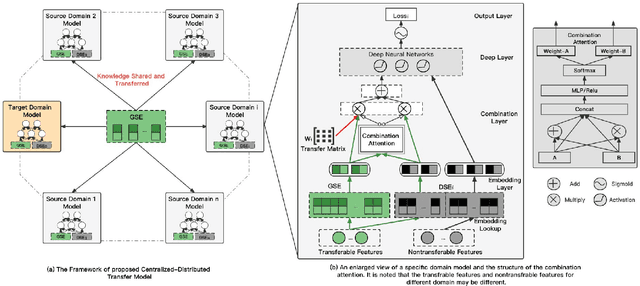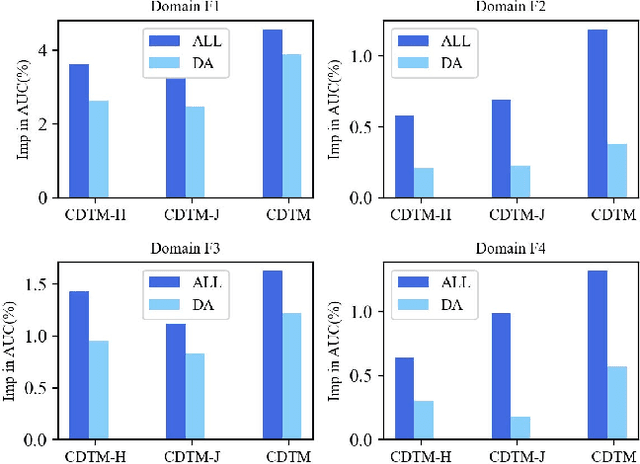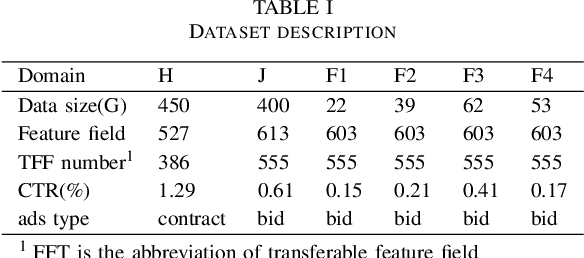Ziliang Wang
Erase to Improve: Erasable Reinforcement Learning for Search-Augmented LLMs
Oct 01, 2025Abstract:While search-augmented large language models (LLMs) exhibit impressive capabilities, their reliability in complex multi-hop reasoning remains limited. This limitation arises from three fundamental challenges: decomposition errors, where tasks are incorrectly broken down; retrieval missing, where key evidence fails to be retrieved; and reasoning errors, where flawed logic propagates through the reasoning chain. A single failure in any of these stages can derail the final answer. We propose Erasable Reinforcement Learning (ERL), a novel framework that transforms fragile reasoning into a robust process. ERL explicitly identifies faulty steps, erases them, and regenerates reasoning in place, preventing defective logic from propagating through the reasoning chain. This targeted correction mechanism turns brittle reasoning into a more resilient process. Models trained with ERL, termed ESearch, achieve substantial improvements on HotpotQA, MuSiQue, 2Wiki, and Bamboogle, with the 3B model achieving +8.48% EM and +11.56% F1, and the 7B model achieving +5.38% EM and +7.22% F1 over previous state-of-the-art(SOTA) results. These findings suggest that erasable reinforcement learning provides a powerful paradigm shift for robust multi-step reasoning in LLMs.
StepSearch: Igniting LLMs Search Ability via Step-Wise Proximal Policy Optimization
May 21, 2025Abstract:Efficient multi-hop reasoning requires Large Language Models (LLMs) based agents to acquire high-value external knowledge iteratively. Previous work has explored reinforcement learning (RL) to train LLMs to perform search-based document retrieval, achieving notable improvements in QA performance, but underperform on complex, multi-hop QA resulting from the sparse rewards from global signal only. To address this gap in existing research, we introduce StepSearch, a framework for search LLMs that trained with step-wise proximal policy optimization method. It consists of richer and more detailed intermediate search rewards and token-level process supervision based on information gain and redundancy penalties to better guide each search step. We constructed a fine-grained question-answering dataset containing sub-question-level search trajectories based on open source datasets through a set of data pipeline method. On standard multi-hop QA benchmarks, it significantly outperforms global-reward baselines, achieving 11.2% and 4.2% absolute improvements for 3B and 7B models over various search with RL baselines using only 19k training data, demonstrating the effectiveness of fine-grained, stepwise supervision in optimizing deep search LLMs. Our implementation is publicly available at https://github.com/zxh20001117/StepSearch.
QoSBERT: An Uncertainty-Aware Approach based on Pre-trained Language Models for Service Quality Prediction
May 09, 2025Abstract:Accurate prediction of Quality of Service (QoS) metrics is fundamental for selecting and managing cloud based services. Traditional QoS models rely on manual feature engineering and yield only point estimates, offering no insight into the confidence of their predictions. In this paper, we propose QoSBERT, the first framework that reformulates QoS prediction as a semantic regression task based on pre trained language models. Unlike previous approaches relying on sparse numerical features, QoSBERT automatically encodes user service metadata into natural language descriptions, enabling deep semantic understanding. Furthermore, we integrate a Monte Carlo Dropout based uncertainty estimation module, allowing for trustworthy and risk-aware service quality prediction, which is crucial yet underexplored in existing QoS models. QoSBERT applies attentive pooling over contextualized embeddings and a lightweight multilayer perceptron regressor, fine tuned jointly to minimize absolute error. We further exploit the resulting uncertainty estimates to select high quality training samples, improving robustness in low resource settings. On standard QoS benchmark datasets, QoSBERT achieves an average reduction of 11.7% in MAE and 6.7% in RMSE for response time prediction, and 6.9% in MAE for throughput prediction compared to the strongest baselines, while providing well calibrated confidence intervals for robust and trustworthy service quality estimation. Our approach not only advances the accuracy of service quality prediction but also delivers reliable uncertainty quantification, paving the way for more trustworthy, data driven service selection and optimization.
Point2Quad: Generating Quad Meshes from Point Clouds via Face Prediction
Apr 28, 2025Abstract:Quad meshes are essential in geometric modeling and computational mechanics. Although learning-based methods for triangle mesh demonstrate considerable advancements, quad mesh generation remains less explored due to the challenge of ensuring coplanarity, convexity, and quad-only meshes. In this paper, we present Point2Quad, the first learning-based method for quad-only mesh generation from point clouds. The key idea is learning to identify quad mesh with fused pointwise and facewise features. Specifically, Point2Quad begins with a k-NN-based candidate generation considering the coplanarity and squareness. Then, two encoders are followed to extract geometric and topological features that address the challenge of quad-related constraints, especially by combining in-depth quadrilaterals-specific characteristics. Subsequently, the extracted features are fused to train the classifier with a designed compound loss. The final results are derived after the refinement by a quad-specific post-processing. Extensive experiments on both clear and noise data demonstrate the effectiveness and superiority of Point2Quad, compared to baseline methods under comprehensive metrics.
A Centralized-Distributed Transfer Model for Cross-Domain Recommendation Based on Multi-Source Heterogeneous Transfer Learning
Nov 14, 2024



Abstract:Cross-domain recommendation (CDR) methods are proposed to tackle the sparsity problem in click through rate (CTR) estimation. Existing CDR methods directly transfer knowledge from the source domains to the target domain and ignore the heterogeneities among domains, including feature dimensional heterogeneity and latent space heterogeneity, which may lead to negative transfer. Besides, most of the existing methods are based on single-source transfer, which cannot simultaneously utilize knowledge from multiple source domains to further improve the model performance in the target domain. In this paper, we propose a centralized-distributed transfer model (CDTM) for CDR based on multi-source heterogeneous transfer learning. To address the issue of feature dimension heterogeneity, we build a dual embedding structure: domain specific embedding (DSE) and global shared embedding (GSE) to model the feature representation in the single domain and the commonalities in the global space,separately. To solve the latent space heterogeneity, the transfer matrix and attention mechanism are used to map and combine DSE and GSE adaptively. Extensive offline and online experiments demonstrate the effectiveness of our model.
Point Cloud Compression via Constrained Optimal Transport
Mar 13, 2024Abstract:This paper presents a novel point cloud compression method COT-PCC by formulating the task as a constrained optimal transport (COT) problem. COT-PCC takes the bitrate of compressed features as an extra constraint of optimal transport (OT) which learns the distribution transformation between original and reconstructed points. Specifically, the formulated COT is implemented with a generative adversarial network (GAN) and a bitrate loss for training. The discriminator measures the Wasserstein distance between input and reconstructed points, and a generator calculates the optimal mapping between distributions of input and reconstructed point cloud. Moreover, we introduce a learnable sampling module for downsampling in the compression procedure. Extensive results on both sparse and dense point cloud datasets demonstrate that COT-PCC outperforms state-of-the-art methods in terms of both CD and PSNR metrics. Source codes are available at \url{https://github.com/cognaclee/PCC-COT}.
A Dual Latent State Learning Approach: Exploiting Regional Network Similarities for QoS Prediction
Oct 07, 2023



Abstract:Individual objects, whether users or services, within a specific region often exhibit similar network states due to their shared origin from the same city or autonomous system (AS). Despite this regional network similarity, many existing techniques overlook its potential, resulting in subpar performance arising from challenges such as data sparsity and label imbalance. In this paper, we introduce the regional-based dual latent state learning network(R2SL), a novel deep learning framework designed to overcome the pitfalls of traditional individual object-based prediction techniques in Quality of Service (QoS) prediction. Unlike its predecessors, R2SL captures the nuances of regional network behavior by deriving two distinct regional network latent states: the city-network latent state and the AS-network latent state. These states are constructed utilizing aggregated data from common regions rather than individual object data. Furthermore, R2SL adopts an enhanced Huber loss function that adjusts its linear loss component, providing a remedy for prevalent label imbalance issues. To cap off the prediction process, a multi-scale perception network is leveraged to interpret the integrated feature map, a fusion of regional network latent features and other pertinent information, ultimately accomplishing the QoS prediction. Through rigorous testing on real-world QoS datasets, R2SL demonstrates superior performance compared to prevailing state-of-the-art methods. Our R2SL approach ushers in an innovative avenue for precise QoS predictions by fully harnessing the regional network similarities inherent in objects.
Probabilistic Deep Supervision Network: A Noise-Resilient Approach for QoS Prediction
Aug 03, 2023



Abstract:Quality of Service (QoS) prediction is an essential task in recommendation systems, where accurately predicting unknown QoS values can improve user satisfaction. However, existing QoS prediction techniques may perform poorly in the presence of noise data, such as fake location information or virtual gateways. In this paper, we propose the Probabilistic Deep Supervision Network (PDS-Net), a novel framework for QoS prediction that addresses this issue. PDS-Net utilizes a Gaussian-based probabilistic space to supervise intermediate layers and learns probability spaces for both known features and true labels. Moreover, PDS-Net employs a condition-based multitasking loss function to identify objects with noise data and applies supervision directly to deep features sampled from the probability space by optimizing the Kullback-Leibler distance between the probability space of these objects and the real-label probability space. Thus, PDS-Net effectively reduces errors resulting from the propagation of corrupted data, leading to more accurate QoS predictions. Experimental evaluations on two real-world QoS datasets demonstrate that the proposed PDS-Net outperforms state-of-the-art baselines, validating the effectiveness of our approach.
Motion Projection Consistency Based 3D Human Pose Estimation with Virtual Bones from Monocular Videos
Jun 28, 2021



Abstract:Real-time 3D human pose estimation is crucial for human-computer interaction. It is cheap and practical to estimate 3D human pose only from monocular video. However, recent bone splicing based 3D human pose estimation method brings about the problem of cumulative error. In this paper, the concept of virtual bones is proposed to solve such a challenge. The virtual bones are imaginary bones between non-adjacent joints. They do not exist in reality, but they bring new loop constraints for the estimation of 3D human joints. The proposed network in this paper predicts real bones and virtual bones, simultaneously. The final length of real bones is constrained and learned by the loop constructed by the predicted real bones and virtual bones. Besides, the motion constraints of joints in consecutive frames are considered. The consistency between the 2D projected position displacement predicted by the network and the captured real 2D displacement by the camera is proposed as a new projection consistency loss for the learning of 3D human pose. The experiments on the Human3.6M dataset demonstrate the good performance of the proposed method. Ablation studies demonstrate the effectiveness of the proposed inter-frame projection consistency constraints and intra-frame loop constraints.
A Probability Distribution and Location-aware ResNet Approach for QoS Prediction
Nov 16, 2020



Abstract:In recent years, the number of online services has grown rapidly, invoke the required services through the cloud platform has become the primary trend. How to help users choose and recommend high-quality services among huge amounts of unused services has become a hot issue in research. Among the existing QoS prediction methods, the collaborative filtering(CF) method can only learn low-dimensional linear characteristics, and its effect is limited by sparse data. Although existing deep learning methods could capture high-dimensional nonlinear features better, most of them only use the single feature of identity, and the problem of network deepening gradient disappearance is serious, so the effect of QoS prediction is unsatisfactory. To address these problems, we propose an advanced probability distribution and location-aware ResNet approach for QoS Prediction(PLRes). This approach considers the historical invocations probability distribution and location characteristics of users and services, and first use the ResNet in QoS prediction to reuses the features, which alleviates the problems of gradient disappearance and model degradation. A series of experiments are conducted on a real-world web service dataset WS-DREAM. The results indicate that PLRes model is effective for QoS prediction and at the density of 5%-30%, which means the data is sparse, it significantly outperforms a state-of-the-art approach LDCF by 12.35%-15.37% in terms of MAE.
 Add to Chrome
Add to Chrome Add to Firefox
Add to Firefox Add to Edge
Add to Edge